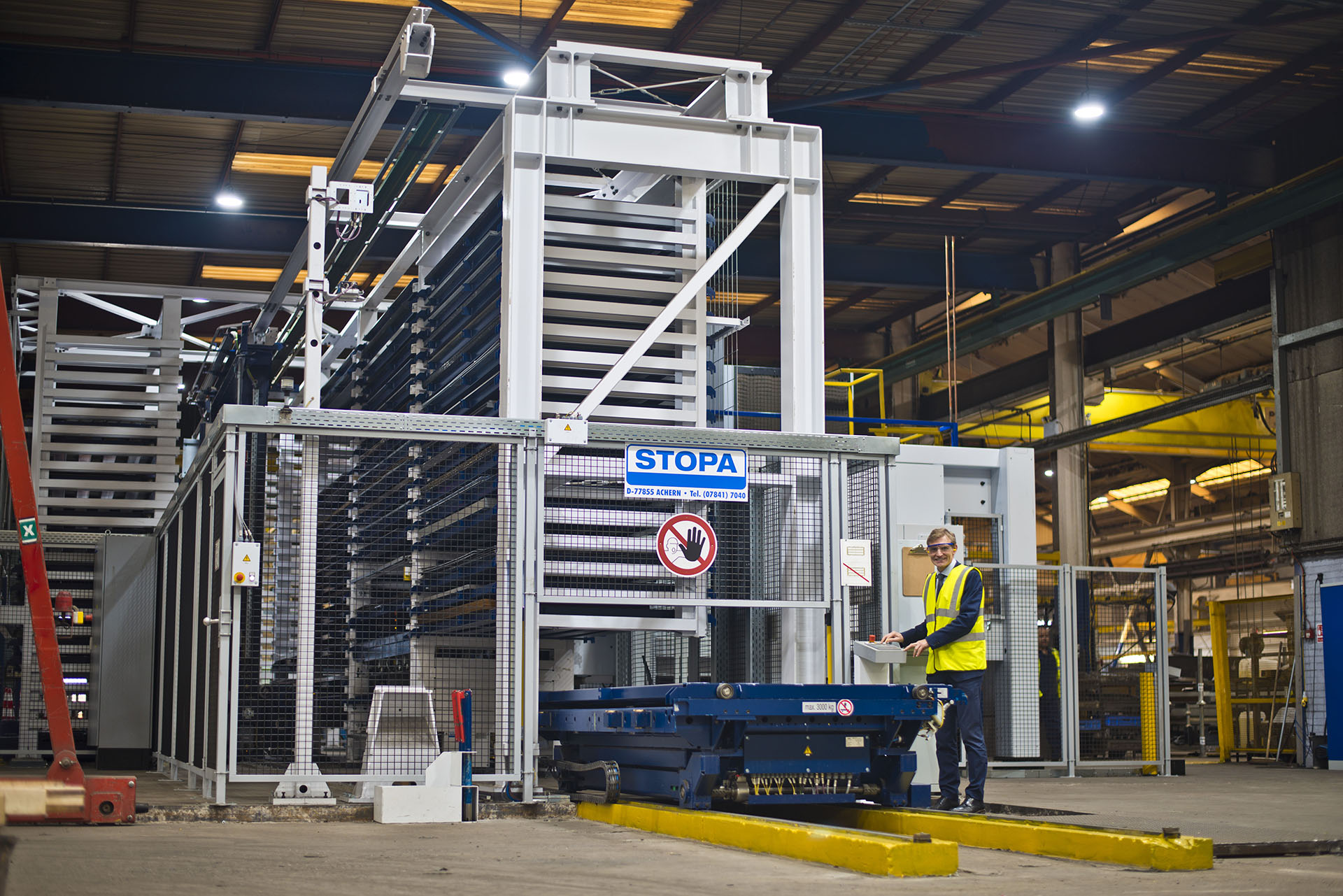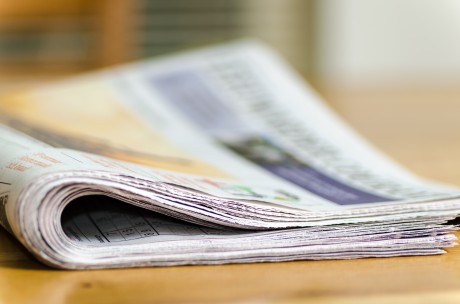Don-Bur is investing £4 million in new plant, software and training to mass-produce a range of standard product types including curtainsider and box van trailers, together with a pallet-network design double deck. The strategic move from the ‘custom’ trailer and bodywork heavyweight supports a targeted increase in turnover of £10 million per annum and recognises a growing demand for short-contract, standard design equipment at highly competitive rates.
Although Don-Bur already designs and manufactures the complete range of commercial vehicle bodywork, they are perhaps best known for their fuel-saving aerodynamic solutions and their Double Deck trailer range which now dominate the major fleets. The heavy investment in the latest cutting-edge equipment was focussed on standardisation, speed, efficiency and volume and the results are impressive.
STOPA Storage & Management Hub
At the core of the new development is a cutting-edge £1M autonomous raw material and parts management hub; a large pallet racking space with room to store 15,795 m2 (4 acres) of sheet steel. Measuring 25m long by 7m wide and 5m tall, the STOPA stock handling modules are tied in to a new ERP software suite which automatically dissolves 3D engineering models into full “bill of material” components. It recognises whether each individual component needs to be cut and pressed or, if not, exports the remainder as an internal order for miscellaneous parts. It also anticipates production schedule requirements for laser cut sheeting, pressings, drilling, and shotblast and issues orders for raw material when it believes stocks are running low. Ingeniously, it also manages ‘scrap’ material; cleverly storing away and re-using remnants of material wherever it can to maximise yield. The only manual intervention is to feed it with raw material and collect prepared job-specific assembly kits.
Trumpf Fibre Laser
The processing workhorse of the new development is a top-of-the-range Trumpf ‘Fibre’ Laser cutter. ‘Fibre’ laser technology is a process of combining multiple laser beams into one lossless optic fibre beam which cuts standard 3mm steel sheet at the staggering rate of 1.38 metres per second.
Speed however is not the only benefit. The new laser uses both Oxygen and Nitrogen gases; Oxygen to supplement the laser with an exothermic power boost and Nitrogen to shield the surface of the cut material from oxidisation. An additional compressed jet of air blasts hot material away from the active site which maintains clean and precise cuts through previously problematic materials such as thin aluminium.
As well as cutting through up to 40mm thick stainless steel, it will also process mild steel, copper, brass and titanium. The new “Brightline” fibre laser technology will cut a hole as small as 3mm diameter through 25mm stainless steel without clogging or melting the surrounding material. Much of this flexibility is assisted by a cutting head with an automated focal length, enabling quick changes between different materials and thicknesses.
The enclosed laser ‘house’ was designed to be as autonomous as possible. The STOPA system feeds to, and collects from, the laser via synchronous loading platforms meaning that the laser never has to stop and wait for more raw material as cut shapes are being transferred.
Even the cutting head itself is automatically monitored to ensure optimum performance. When performance drops below 60% of maximum efficiency, the system swaps its own cutting head for a new one from a spares drawer.
In addition to raw cutting speed, the new shape nesting software and head placement technology is able to reduce a typical nest cut time (for a 3m x 1.5m sheet) from 21 ½ minutes to just 2 ½ minutes. The end result is the ability to process nine times more material with virtually no loading or unloading time. It also achieves that using 70% less gas than the previous laser cutter.
Trumpf Press Brakes
Linked to the STOPA hub are two new Trumpf press brakes to cater for the vast majority of all sub-assembly requirements.
36T 1m Unit
This all-electric press brake was acquired specifically for the rapid repetitive processing of small parts. The ergonomic unit uses a servo drive which turns over 60% more pressings and uses 30% less power.
For user ease and speed of switching from one pressing type to another, the new unit illustrates each pressed part and process using an animated 3D model.
230T 4m Unit
The second press brake is destined for larger parts but only requires one person to operate; assisted by two front lift-assist robots.
The hydraulic-on-demand power driven beam can precisely bend 20mm thick stainless steel sheets up to 2m long or up to 10mm thick sheets for 4m long sheets. Each bend is laser-monitored to anticipate and compensate for any ‘bounce-back’ that may occur depending on material hardness which ensures accurate final component dimensions.
An advanced user interface also boasts 3D Augmented Reality which overlays a “correct” 3D part placement over a live “real” video feed to ensure the user manipulates the material quickly and accurately which offers a 50% production speed increase and virtually eliminates waste.
Yaskawa Auto Welding Cell
Last, but not least of the new equipment is a twin robotic welding cell which manages complex welded components up to 3.5m x 1.7m and up to 1T in weight. The two high performance arc machines can weld mild steel, stainless steel or even aluminium and reduces average man hours by a factor of 6. Some examples are given below:
|
Component |
Typical weld time |
New Yaskawa weld time |
|
Deck Bridging Plate |
120 minutes |
8 minutes |
|
Lifting Deck Floor Assembly |
40 minutes |
11 minutes |
|
Lifting Deck Side Walls |
20 minutes |
3.5 minutes |
The significant boost in speed enables Don-Bur to manufacture far more assemblies per hour; allowing existing resources to focus on other, less standard components.
To minimise change-over time, the new welding cell has a twin, flip-over work station area which enables a continuous process. It also records weld characteristics for each assembly which means it can predict processing time and makes production planning far simpler.
What does this mean to Don-Bur?
Keen to stay true to its core values, Don-Bur will retain the same drive, devotion and capacity for the design and manufacture of the slightly more specialised product portfolio it has become so well known for. The new investment plan allows them to rapidly produce a range of “configured to order” standard product lines on short lead times which will be immediately attractive to many general hauliers, rental companies and pallet network operators alike; a relatively untapped market for Don-Bur.
We’d love to hear from you – get in touch today!




